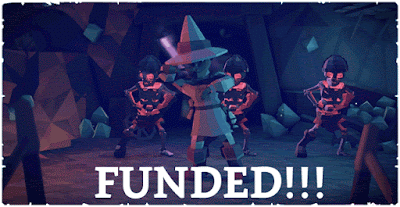Here's some of the press release.
In the early 1970s, scientists believed that DNA was an extremely stable molecule, but Tomas Lindahl demonstrated that DNA decays at a rate that ought to have made the development of life on Earth impossible. This insight led him to discover a molecular machinery, base excision repair, which constantly counteracts the collapse of our DNA.What about Phil Hanawalt?
Aziz Sancar has mapped nucleotide excision repair, the mechanism that cells use to repair UV damage to DNA. People born with defects in this repair system will develop skin cancer if they are exposed to sunlight. The cell also utilises nucleotide excision repair to correct defects caused by mutagenic substances, among other things.
Paul Modrich has demonstrated how the cell corrects errors that occur when DNA is replicated during cell division. This mechanism, mismatch repair, reduces the error frequency during DNA replication by about a thousandfold. Congenital defects in mismatch repair are known, for example, to cause a hereditary variant of colon cancer.
Meanwhile, in other news: Discovery and Characterization of DNA Excision Repair Pathways: the Work of Philip Courtland Hanawalt ...
In 1963, Hanawalt and his first graduate student, David Pettijohn, observed an unusual density distribution of newly synthesized DNA during labeling with 5-bromouracil in UV-irradiated E. coli. These studies, along with the discovery of CPD excision by the Setlow and Paul Howard-Flanders groups, represented the co-discovery of nucleotide excision repair.And Wikipedia [Philip Hanawalt] says,
Philip C. Hanawalt (born in Akron, Ohio in 1931) is an American biologist who discovered the process of repair replication of damaged DNA in 1963. He is also considered the co-discoverer of the ubiquitous process of DNA excision repair along with his mentor, Richard Setlow, and Paul Howard-Flanders. He holds the Dr. Morris Herzstein Professorship in the Department of Biology at Stanford University,[1] with a joint appointment in the Dermatology Department in Stanford University School of Medicine.Here's what Hanawalt himself says about discovering DNA excision repair [The Awakening of DNA Repair at Yale] ...
Upon joining the faculty at Stanford University in late 1961 as Research Biophysicist and Lecturer, I returned to the problem of what UV did to DNA replication, now that we knew the principal photoproducts. I wanted to understand the behavior of replication forks upon encountering pyrimidine dimers, and I was hoping to catch a blocked replication fork at a dimer. Using density labeling with 5-bromouracil and radioactive labeling of newly-synthesized DNA, we were able to observe partially replicated DNA fragments in E. coli [13]. However, in samples from UV irradiated bacterial cultures, the density patterns of nascent DNA indicated that much of the observed synthesis was in very short stretches, too short to appreciably shift the density of the DNA fragments containing them [14]. I communicated these results to Setlow by phone and learned that he had just discovered that pyrimidine dimers in wild type cells, but not in Ruth Hill’s UV sensitive mutant, were released from the DNA into an acid soluble fraction. We speculated in discussion that my student, David Pettijohn, and I were detecting a patching step by which a process of repair replication might use the complementary DNA strand as template to fill the single-strand gaps remaining after the pyrimidine dimers had been removed. At about the same time, Paul Howard-Flanders in the Department of Therapeutic Radiology at Yale had isolated a number of UV-sensitive mutants from E. coli K12 strains, and he was able to show that these mutants were also deficient in removing pyrimidine dimers from their DNA. The seminal discovery of dimer excision was published by the Setlow and Howard-Flanders groups, as the first indication of an excision repair pathway [15,16]. Of course, the excision per se is not a repair event but only the first step, since it generates another lesion, the gap in one strand of the DNA. We carried out more controls, to then claim that we had discovered a non-conservative mode of repair replication, constituting the presumed patching step in the postulated excision-repair pathway [17]. I later showed that DNA containing the repair patches could undergo semiconservative replication with no remaining blockage [18].One of Hanawalt's students was Jonathan Eisen [Tree of Life]. I'll be interested in hearing what he has to say about this Nobel Prize. It seems unfair to me.
Richard Boyce and Howard-Flanders at Yale also documented excision of lesions induced by mitomycin C in E. coli K12 strains, indicating some versatility of excision repair [19]. In a collaboration with Robert Haynes, I found a similar pattern of repair replication after nitrogen mustard exposure to that following UV, and we concluded that “it is not the precise nature of the base damage that is recognized, but rather some associated secondary structural alteration …” We speculated that “[s]uch a mechanism might even be able to detect accidental mispairing of bases after normal replication,” thus predicting the existence of a mismatch repair pathway [20]. Mismatch repair was reported by Wagner and Meselson a decade later [21] and yet another excision repair mode, termed base excision repair, was discovered by Tomas Lindahl [22].






































